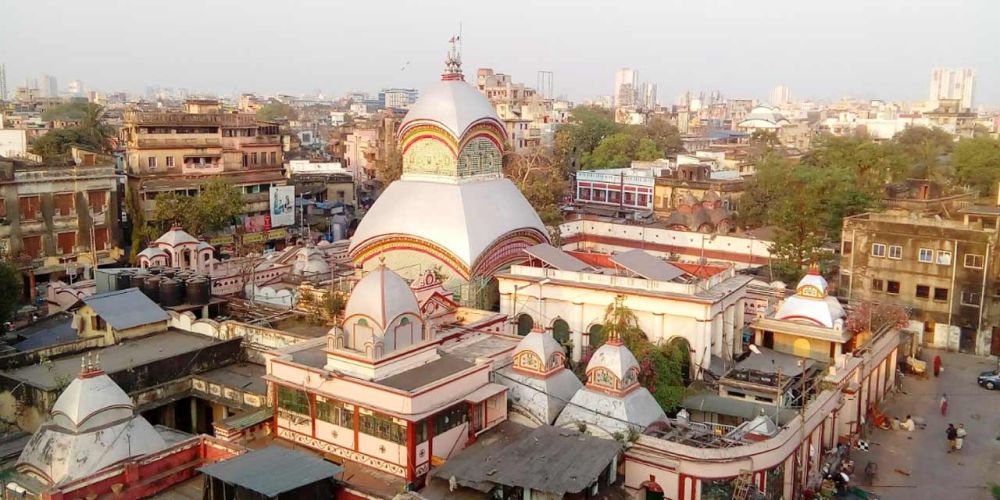

The Kalighat Kali Temple is one of the most revered and visited temples in Kolkata, West Bengal, dedicated to the goddess Kali. It stands on the banks of the Hooghly River and is considered one of the 51 Shakti Peethas, sacred sites where the body parts of the goddess Sati fell. The history of the temple is intertwined with the history of Kolkata itself, making it a spiritual and cultural landmark.
The origin of the Kalighat Kali Temple is shrouded in legends and historical anecdotes. It is believed to have been a small hut originally, some references suggest as early as the 15th century, where the toe of Goddess Sati is said to have fallen. Over time, it evolved from a small sanctuary to the grand temple complex it is today. The current structure was completed in the 19th century, but the temple in its various forms has been a significant pilgrimage site for centuries.
During the British Raj, Calcutta (now Kolkata) was the capital of British India, which increased the opportunities for the temple to be exposed to a wider audience of pilgrims and curious visitors. With the urban expansion of Calcutta, the area around Kalighat also developed, and this popular temple became easily accessible, further facilitating its growth as a tourist destination.
In the 20th and 21st centuries, tourism at Kalighat Kali Temple expanded significantly. Visitors from all over India and the world come to seek blessings and experience the vibrant atmosphere of the temple and its surroundings. Regular festivals and special pujas add to the appeal, with the temple area becoming a hub for religious celebrations, spiritual learning, and cultural exchanges.
Recently, there has been a focus on improving facilities and access for tourists and pilgrims alike. This has included efforts like crowd management during festivals, enhancement of amenities for visitors, and the introduction of digital platforms for darshan and donations.
The latest trend in tourism at Kalighat involves sustainable and responsible tourism practices. Efforts are being made to manage waste and ensure the cleanliness of the temple surroundings. Moreover, cultural tourism initiatives are being taken by local authorities and enthusiasts to promote the rich heritage associated with Kalighat and its rituals, arts, and crafts, such as the famed Kalighat paintings.
While the COVID-19 pandemic temporarily impacted visitation, the temple has adapted by offering online viewing options and implementing safety measures for visitors. The temple's significance in the spiritual and cultural fabric of India continues to attract a steady stream of devotees and tourists seeking an authentic encounter with Kolkata's age-old traditions.
For those planning to visit, it is recommended to check the timings and any special entry requirements. The temple is usually busiest during auspicious days and times according to the Hindu calendar. Additionally, it is advisable to respect the local customs and dress modestly when visiting this sacred site.
Whether as a destination for spiritual salvation, cultural enlightenment, or simply to soak in the essence of Kolkata's time-honored traditions, Kalighat Kali Temple remains a fascinating testimonial to the city's religious importance and its historical evolution as a center for pilgrimage and tourism.